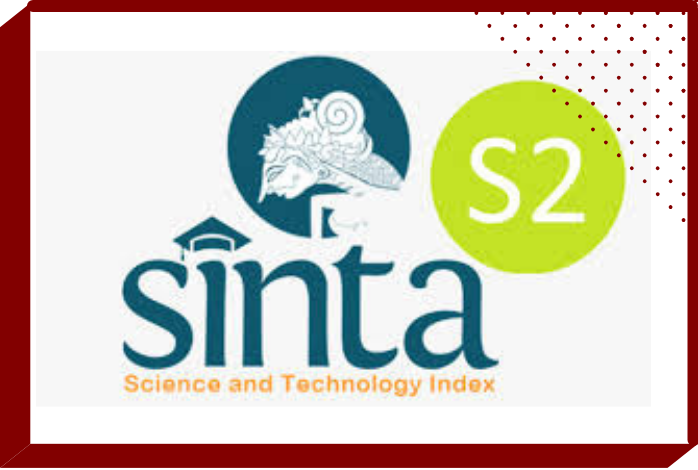Morphological Processes of The Buginese Language in Palu
 Abstract views: 183
,
Abstract views: 183
,
 PDF downloads: 184
PDF downloads: 184
Abstract
This morphology of the Buginese language research aimed to describe the forms of nouns, verbs, and adjectives in the Buginese language in Palu. This research used a descriptive-qualitative method. The data source for this research was the oral text. The techniques of data collection were observation technique, followed by the involved conversation observation technique, the uninvolved conversation observation technique, note-taking and recording techniques. The data were analyzed using matching technique and distributional technique. The results showed that the noun form of the Buginese language consists of basic nouns in concrete form as well as derivative nouns of affixation, reduplication, and compounding noun. Meanwhile, the Buginese verb form consists of basic material and mental verbs, as well as affixation, reduplication, and compounding verbs. In the Buginese language, adjective forms include the basic adjectives of color, size, time, and perception, as well as the derivative adjectives of affixation, reduplication, and compounding.
Downloads
References
Agustina, T., & Oktavia, W. (2019). Analisis Kesalahan Berbahasa pada Bahan Ajar Kelas Menyimak Program BIPA IAIN Surakarta. Disastra. Jurnal Pendidikan Bahasa dan Sastra Indonesia, 1(2), 146-156.
Dama, S. (2015). Proses Morfologis Kata Benda dalam Bahasa Inggris dan Bahasa Gorontalo (Suatu Analisis Kontrastif). Jurnal Elektronik Fakultas Sastra Universitas Sam Ratulangi, 4(5).
Diari, K. P. Y. (2019). Proses Morfologis Istilah-Istilah dalam Tajen. Widyacarya: Jurnal Pendidikan, Agama dan Budaya, 2(2), 85-90.
Firman, A. D. (2023). Afiks Derivasional Pembentuk Verba dalam Bahasa Buginese (Verb Forming Derivational Affixes in Buginese Language. Kandai, 8(1), 33-44.
Gani, S. (2019). Kajian Teoritis Struktur Internal Bahasa (Fonologi, Morfologi, Sintaksis, dan Semantik). A Jamiy: Jurnal Bahasa dan Sastra Arab, 7(1), 1-20.
Hasanah, H., Fibiani, M., & Fizriyani, W. (2023). Reduplikasi Nomina dan Verba dalam Bahasa Using. Deiksis, 15(1), 25–40.
Kusumasari, N. M. I., dkk. (2019). Penggunaan Setsuzokushi Tonikaku, Tokorode, dan Jyaa dalam Novel Norwei No Mori Karya Haruki Murakami. Humanis: Journal of Arts and Humanities, 2(3), 334–341.
Mawo, J. S., Barasandji, S., & Syamsuddin. (2016). Morfologi Nomina Bahasa Pamona. Bahasa dan Sastra, 1(3).
Minarti, M. (2021). Sistem Morfologi Bahasa Buginese Pinrang Percakapan Anggota Masyarakat Desa Anggoro Kecamatan Abuki Kabupaten Konawe. Jurnal Ilmiah Dikdaya, 11(2), 151–160.
Ramlan. (2012). Ilmu Bahasa Indonesia “Sintaksis.” Karyono.
Rifa’i, A. (2021). Kajian Filosofi Pendekatan Komunikatif dalam Pembelajaran Bahasa Arab. Jurnal Pendidikan dan Pemikiran, 2(3), 60-74.
Septiana, D. (2018). Proses Morfologis Verba Bahasa Waringin (Morphological Process of Verb in Waringin Language). Kandai, 14(2), 287–302.
Setiyadi. (2009). Perspektif Psikolinguistik Bahasa dan Linguistik. At-Ta’dib, 4(2).
Simpen, I. W. (2021). Morfologi: Kajian Proses Pembentukan Kata. Bumi Aksara.
Sirajuddin, S. (2017). Analisis Data Kualitatif. Pustaka Ramadhan.
Sugiyono. (2016). Metode Penelitian Kuantitatif Kualitatif dan R&D. Alfabeta.
Wasik, H. A., & Nusarini, N. (2017). Penggunaan Nomina dalam Surat Kabar Harian Tribun. Caraka: Jurnal Ilmu Kebahasaan, Kesastraan, dan Pembelajarannya, 4(1), 77–90.
Yunidar, dkk. (2023). Struktur dan Pola Vitalitas Bahasa pada Mahasiswa Beretnis Kaili di Universitas Tadulako. Aksara, 35(1), 116–124.
Copyright (c) 2024 GHANCARAN: Jurnal Pendidikan Bahasa dan Sastra Indonesia

This work is licensed under a Creative Commons Attribution-ShareAlike 4.0 International License.
Ghancaran: Jurnal Pendidikan Bahasa dan Sastra Indonesia uses an Open Access Policy under the Creative Commons Attribution-ShareAlike 4.0 International License. Authors publishing in this journal agree to the following terms:
- Ghancaran Journal holds the copyright and grants the journal rights for first publication with the work simultaneously licensed under a

The work is distributed under Creative Commons Attribution-ShareAlike 4.0 International License which allows others to share, copy, and redistribute the material in any media or format and adapt, remix, change, and develop the material even for commercial purposes, as long as it is stated credit and license derivative works under similar terms. - Authors may make additional contractual arrangements for non-exclusive distribution of the journal's published work version.
- Authors are permitted to post their work online (e.g., in institutional repositories or on their websites) before and during submission, as doing so may lead to productive exchange.



















